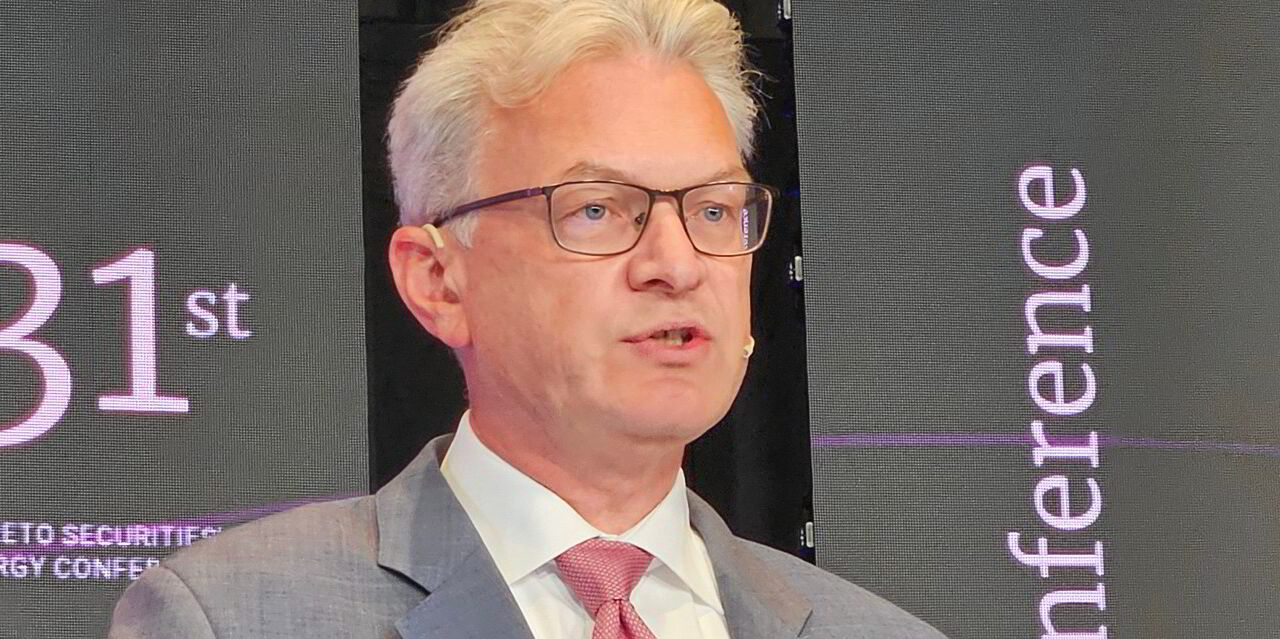K Line has seen first-half net profit soar on the back of its containership business as short-term freight rates rose.
The Japanese shipowner saw its net income, for the April to September 2024 period, surge to ¥183.2bn ($1.18bn), against the ¥60.8bn achieved this time last year.
K Line’s container ship segment, operated by affiliate Ocean Network Express, saw its ordinary income quadruple year on year to ¥136.4bn, as cargo movements were strong.
“Along with steady personal consumption in North America, there was increased demand for early shipments due to strike concerns at ports on the East Coast of North America, following a labour negotiations breakdown,” K Line said.
“There was also a rise in demand for year-end shipments to Europe, which began earlier than usual due to the Middle East situation. This pushed up short-term freight rates, leading to higher revenue and profit compared to the same period last year.”
K Line’s dry bulk fleet, which numbers about 190 ships, also had a strong first half, with ordinary income more than doubling to ¥6.2bn.
“In the capesize market, while iron ore and bauxite transport demand from the Atlantic region to East Asia remained steady from the start of the period, a temporary softening occurred mainly due to reduced iron ore shipments from Australia,” it said.
“However, the supply-demand balance tightened with the subsequent recovery in shipments and adverse weather in the Far East, leading to stable progress overall.”
Looking at the second quarter alone, K Line’s dry bulk segment did see its ordinary income drop to -$1.3bn. The company did not offer comparative figures for the second quarter of 2023, however this time last year ordinary income was quoted at $1.3bn.
“The market conditions for panamax and smaller sizes saw a temporary easing of the supply-demand balance due to reduced South American grain shipments and the recovery of water levels in the Panama Canal.
“However, they remained generally firm, supported by factors such as grain shipments from North America, demand for coal and steel transport to China and India,” it added.
K line also outlined that the panamax market softened in the second quarter as cargo volumes from South America fell short of initial forecasts due to a strong grain harvest in China.
In its car carrier business, K Line indicated that despite ongoing tensions in the Middle East and continued port congestion in certain regions, stable demand for finished vehicle transport helped ensure efficient operations and vessel deployment, resulting in a steady marine cargo volume.
K Line’s fleet at the end of the first quarter included 89 capesizes, 95 panamax or smaller bulkers and 11 woodchip carriers.
It also has significant exposure to the car carrier and LNG markets, with 92 car carriers and 46 LNG carriers.
Income forecast to rise on stable dry market
Looking ahead to the full year, K Line expects net income to more than double to ¥235bn compared to a year ago and higher than the ¥210bn predicted in the company’s first-quarter results.
Operating income is expected to improve by ¥21.9bn in the second half of the financial year compared to the first on the back of stable market conditions for dry bulk as well as steady vehicle production and shipment volumes for the car carrier business, K Line added.
“Although there is uncertainty in the containership business environment for the second half, ordinary income and net income for the full year are expected to increase,” it said.
K Line also indicates that despite there being causes for concern, in terms of the uncertain outlook for the Chinese economy and the continuing geopolitical risks in the Middle East: “Market conditions are expected to remain firm due to tighter vessel supply and demand over the medium to long term against the backdrop of limited delivery of new vessels.”
In the car carrier business, although there are concerns about the possibility of a global economic recession and geopolitical risks, vehicle production and shipments are expected to remain steady.
“For the containership business, while an uncertain business environment persists due to the situation in the Middle East and labour negotiations on the East Coast of North America, new vessel deliveries are expected to impact the supply-demand situation,” K Line said.






